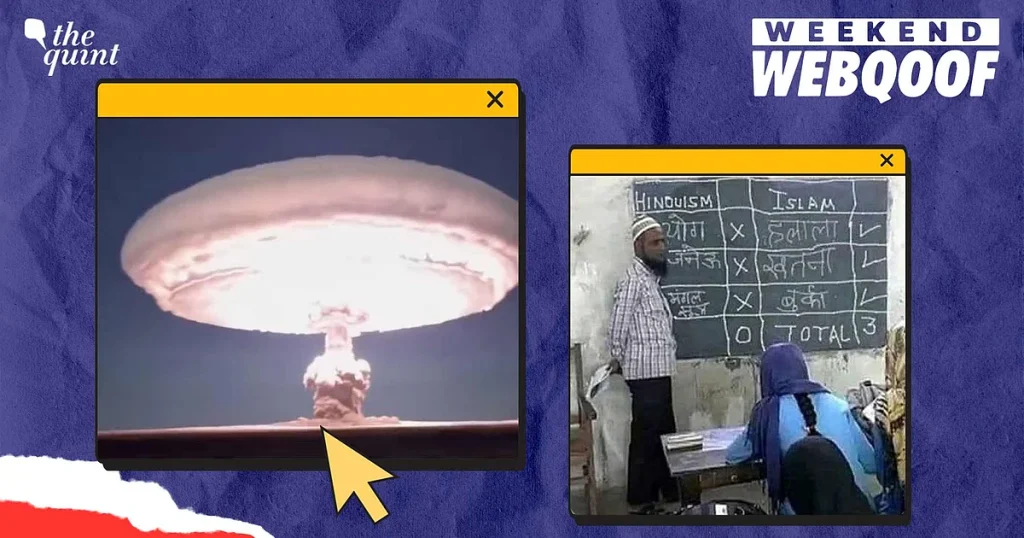WebQoof Recap: Deluge of Misinformation Engulfs Bihar Polls and Israel-Iran Conflict
The digital sphere continues to be a breeding ground for misinformation, with recent weeks witnessing a surge of fabricated narratives surrounding key events, particularly the Bihar polls and the escalating Israel-Iran conflict. These false narratives, often amplified through social media platforms, have the potential to manipulate public opinion, incite tensions, and undermine democratic processes. From manipulated images and misleading videos to outright fabricated stories, the spread of misinformation has become a significant challenge in the modern information landscape. The following recap explores the key instances of misinformation that have proliferated online, emphasizing the importance of critical thinking and media literacy in navigating the digital age.
The Bihar Assembly elections saw a wave of manipulated content designed to influence voter perceptions. One prominent instance involved a doctored image purportedly showing a large crowd at a political rally, falsely attributed to a specific party. This image, widely circulated on social media, aimed to project an inflated sense of popularity and support. Similarly, misleading videos were shared claiming to expose electoral malpractices, further adding to the confusion and distrust surrounding the electoral process. The deliberate dissemination of such fabricated content underlines the vulnerability of democratic systems to manipulation in the digital age. Fact-checking initiatives and media literacy campaigns become crucial in countering these narratives and promoting informed decision-making among voters.
The escalating conflict between Israel and Iran also became a hotbed of misinformation. Fake news reports claiming imminent military strikes and exaggerated casualty figures were widely circulated, fueling anxieties and stoking international tensions. Doctored satellite images, purporting to show troop deployments and military installations, added another layer of complexity to the information war. The rapid spread of these false narratives underscores the potential for misinformation to exacerbate real-world conflicts and escalate geopolitical tensions. The need for responsible reporting and cautious consumption of information becomes even more critical in such sensitive situations.
Furthermore, social media platforms were inundated with out-of-context images and videos, often presented as evidence of atrocities committed by one side or the other. A particularly egregious example involved a video from a past conflict being falsely attributed to the current situation, aiming to inflame emotions and incite hatred. These manipulative tactics exploit the emotional vulnerabilities of individuals and contribute to the polarization of online discourse. The power of visual media to evoke strong emotional responses makes it a particularly potent tool for spreading misinformation and manipulating public opinion.
Beyond the immediate political and geopolitical contexts, other instances of misinformation also surfaced, highlighting the pervasiveness of the problem. A viral video claiming to show a miraculous cure for a chronic disease was debunked by medical experts, illustrating the dangers of misinformation in the health domain. Similarly, false claims about government policies and economic data circulated widely, potentially impacting public trust and economic stability. These examples demonstrate the broad reach of misinformation and its potential to affect various aspects of life, from personal health decisions to broader societal understandings.
The proliferation of misinformation underscores the urgent need for collective action to combat this growing menace. Fact-checking organizations play a vital role in debunking false narratives and providing accurate information. Media literacy initiatives are crucial in empowering individuals with the skills to critically evaluate information and identify misinformation. Social media platforms bear the responsibility of implementing robust mechanisms to detect and remove harmful content. Furthermore, fostering a culture of critical thinking and responsible information sharing is essential in mitigating the impact of misinformation and safeguarding the integrity of the information ecosystem. By working together, individuals, organizations, and governments can contribute to creating a more informed and resilient information landscape.


